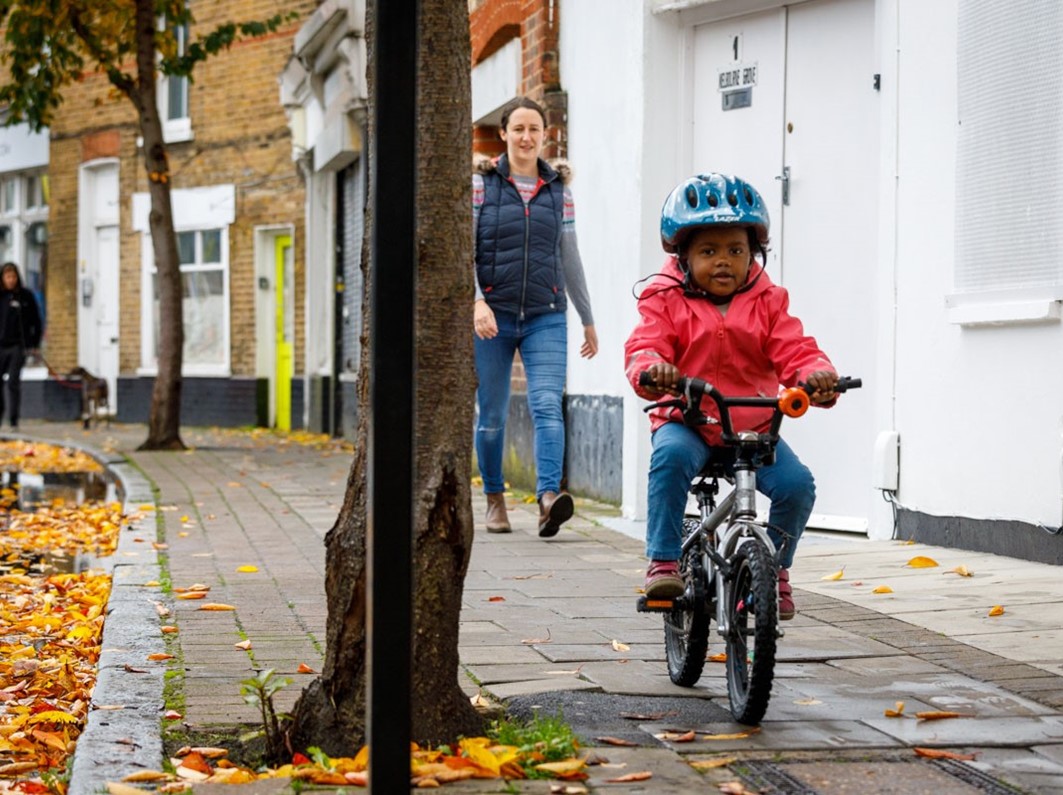Walkable neighbourhoods
WHAT WE SAY
Cities around the world are now competing in terms of liveability. At Living Streets we think that central to this is ensuring our streets are walkable.
The last decade has seen a huge increase in traffic on minor and residential roads as satellite navigation leads drivers to the shortest or quickest route.. This has a serious impact on the health and quality of life of people living there – too much traffic, too fast, too noisy, too much pollution.
Issues of air and noise pollution are very real. But one of the most tangible effects the ‘ratrun’ or through traffic is the reduction in time people spend outside their homes in their community.
In the space of two generations, we’ve seen children’s roaming distance collapse as motor vehicle volumes have rocketed.
Children don’t play out any more, and neighbours don’t chat to each other. However the effects are not felt equally.
Often the areas where people are most like likely to need to walk (or cycle) for transport are the least suited for active travel. Low household income, poor public transport provision, the quality of the outdoor environment and factors such as crime also help to create a dependence on motor vehicles increasing traffic.
It’s a vicious circle. That’s why we want to have a conversation and share our passion about the benefits low-traffic solutions can bring.

Image c. Crispin Hughes
WHAT WE WANT
We’ve known for decades that the less traffic on a street, the more community interaction and healthy physical activity we see.
Because of that more and more councils and residents are now working together to make residential streets work better for the people who live on them.
These are places where through motor vehicle traffic has been removed or reduced – so only residents and a few deliveries and services have access.
Less traffic is great for everyone. In a low traffic neighbourhood children can play outdoors, neighbours can catch up, air pollution is lower, and walking and cycling become the natural choice for everyday journeys.
That said, this is just one of many low traffic solutions. Every place is different and it may be that in your community installing a crossing on the busy main road next to your local primary school is your priority.
IT’S ESSENTIAL TO HAVE COMMUNITIES ON BOARD
They are the experts on where they live. Solutions don’t have to be delivered all at once. A school street can be a good stepping-stone to a low traffic neighbourhood.
Why not trial it and see? The tricky part can be matching local ambitions to the funding available.
Do low traffic neighbourhoods increase traffic on adjacent main roads? In the short term yes, but experience has shown that people’s travel behaviours change and cutting through traffic on side streets doesn’t add significantly to congestion on main roads.
Plus it’s a lot cheaper than building new roads!
Introducing low traffic neighbourhoods is not without its challenges because these have to be seen as part of a much broader movement to improve transport choices and reduce people’s reliance on motor vehicles.
However, examples from across London have shown that they can be incredibly popular. We’ll hopefully be seeing more and more UK wide examples.
This guide is from London Cycling Campaign and Living Streets and draws on expertise from those who’ve designed, implemented and campaigned for award-winning low traffic neighbourhoods.
